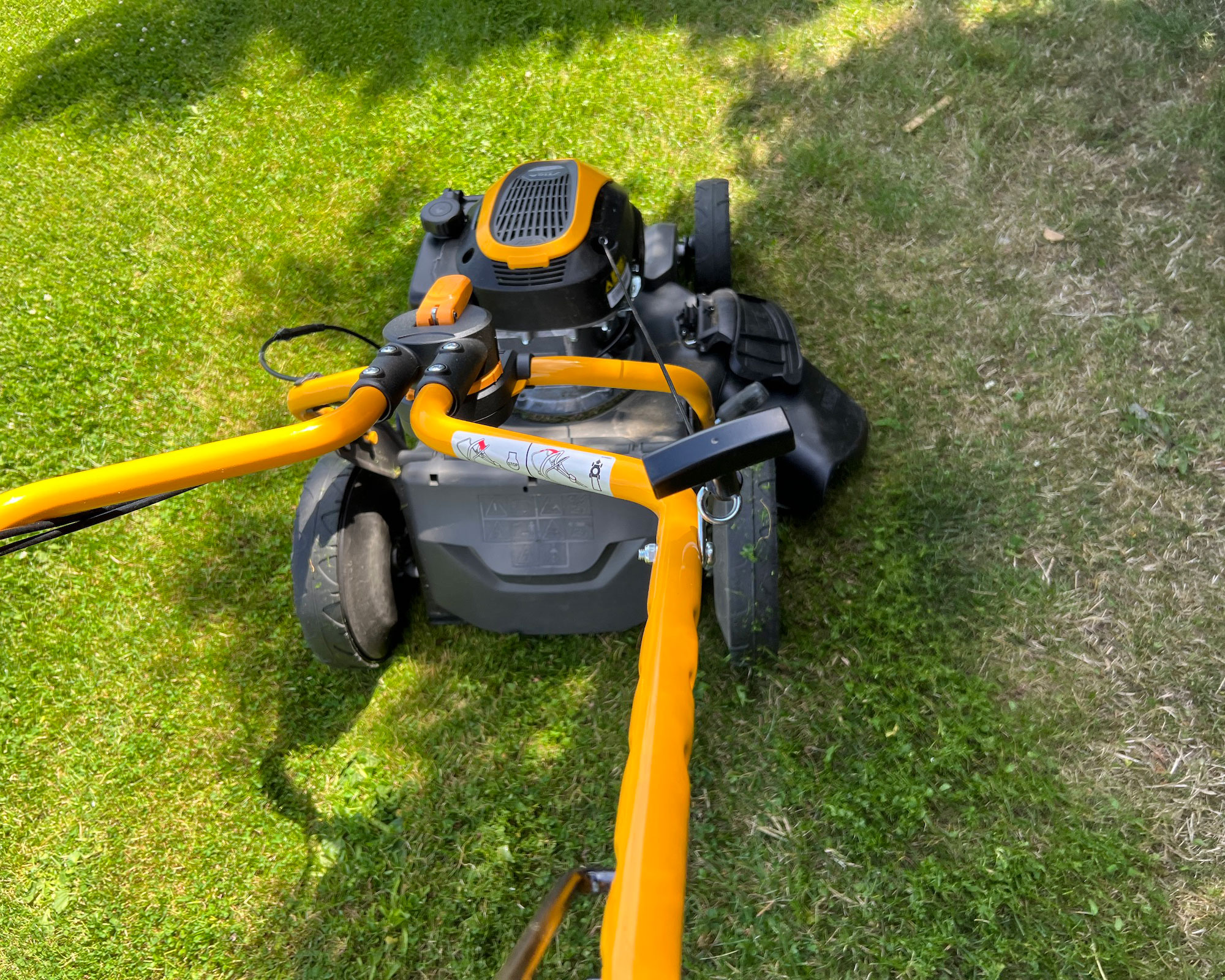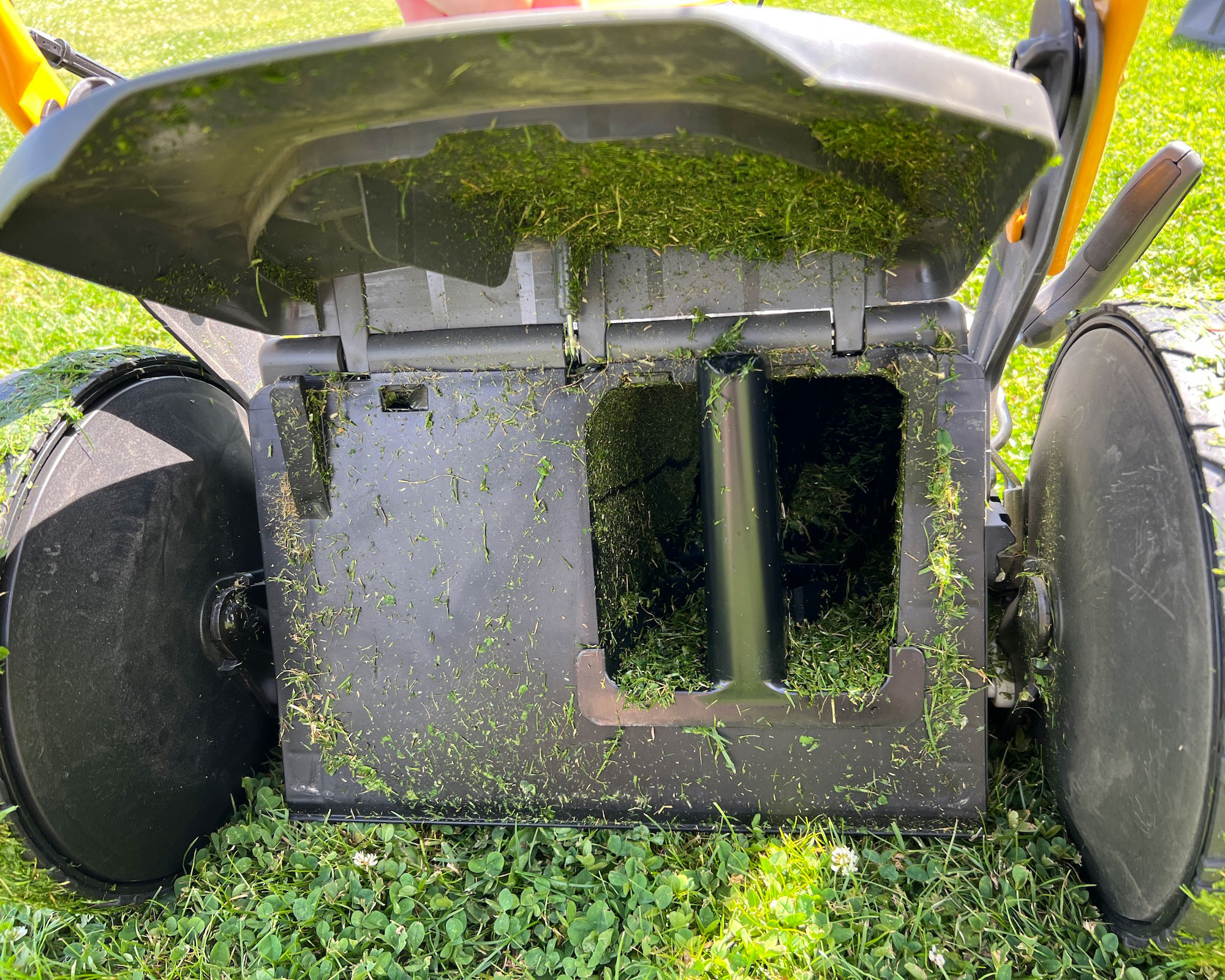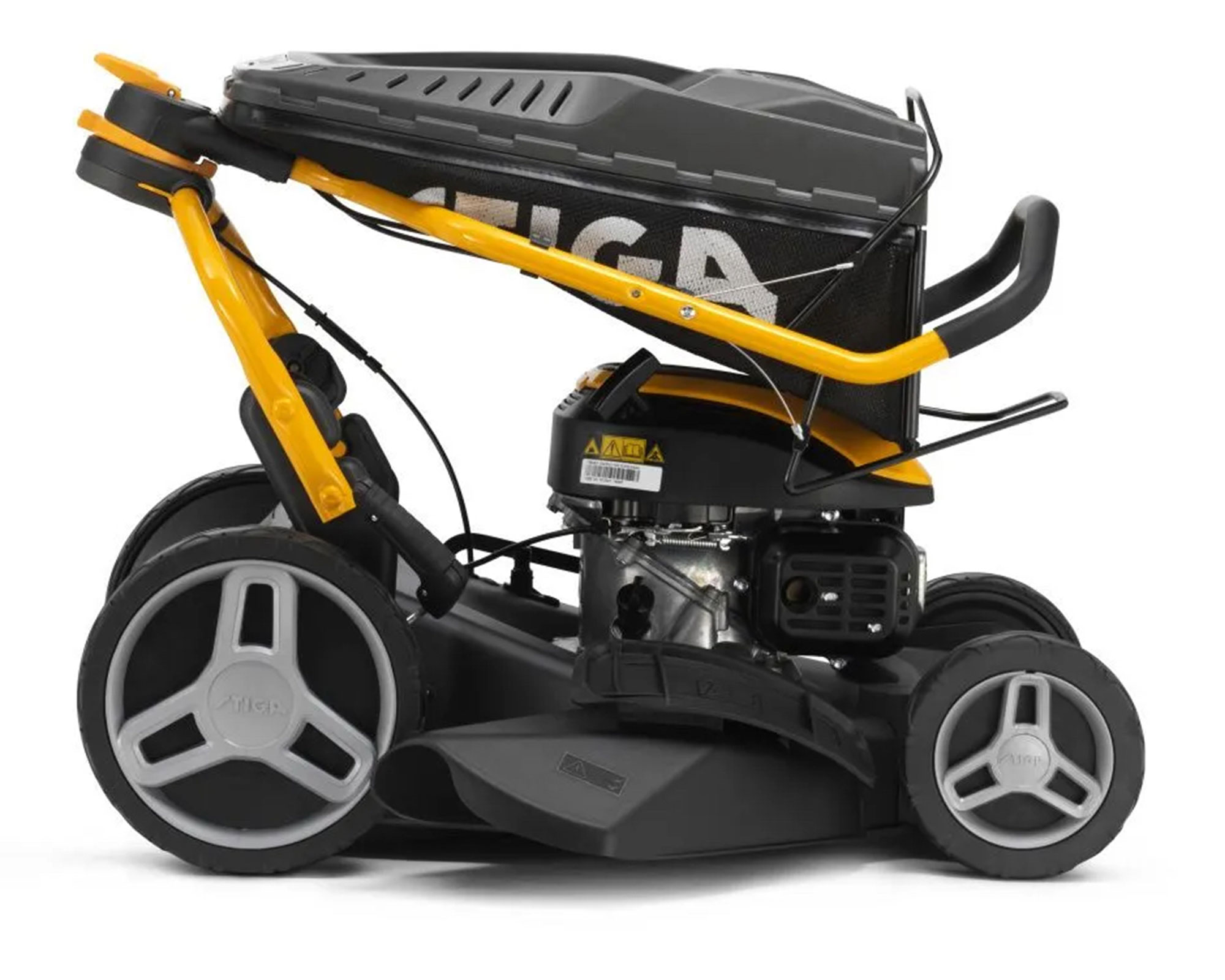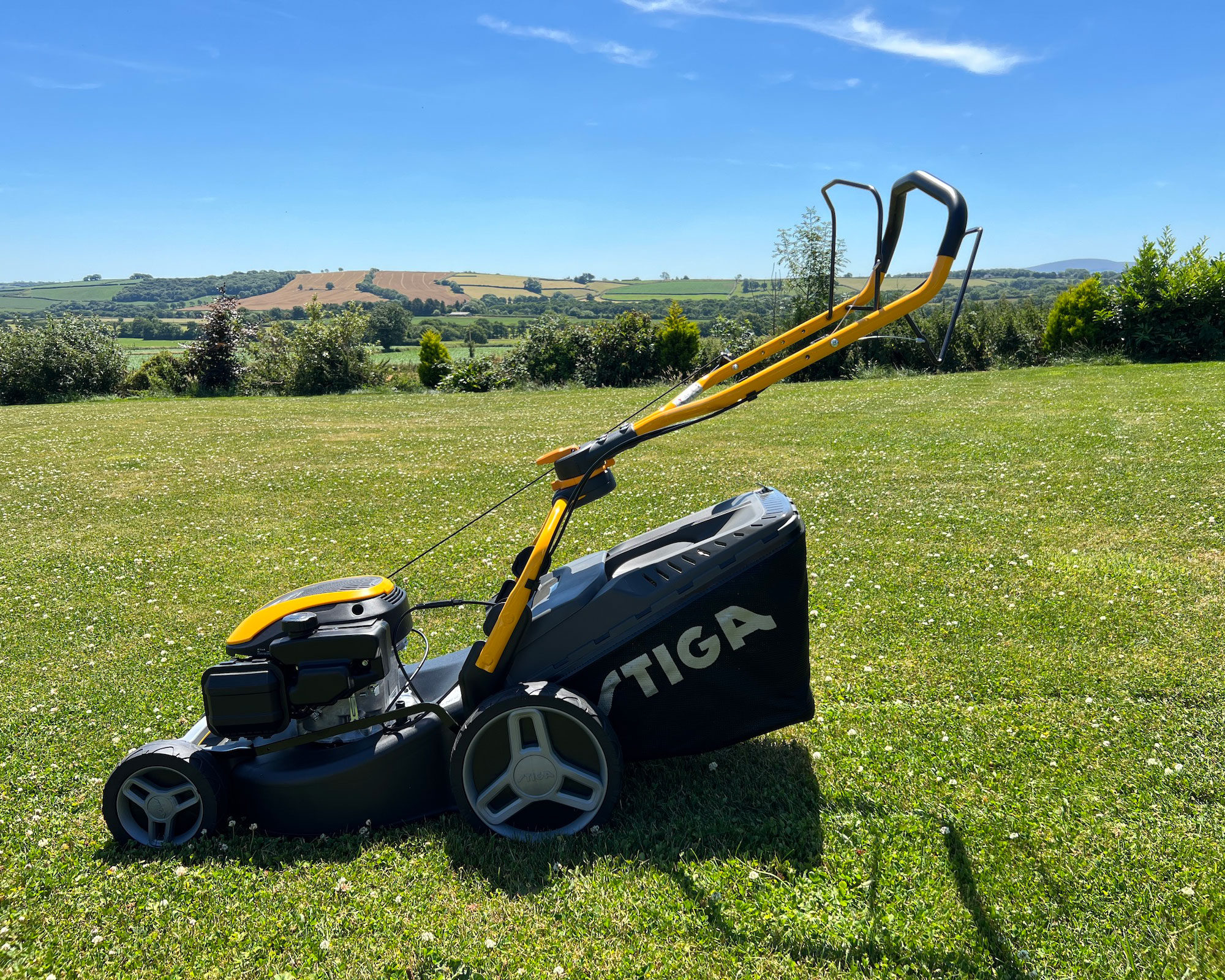The Stiga Combi 748 S lawn mower: self-propelled mowing just got easier
With smart features and sharp looks, is the Stiga Combi 748 S lawn mower the coolest petrol mower on the block? We’ve got the lowdown…


This is an impressive petrol mower that will make light work of medium to large lawns, especially if they are not millpond flat. The generous 280mm diameter wheels made the Stiga Combi 748 S really easy to manoeuvre over our rather lumpy lawns and, together with the self-propelling system, mowing was (almost) a pleasure. It also sports some pretty cool features and ALL the options when it comes to grass discharging. A real crowd-pleaser that’s built to last.
-
+
Self-propelled
-
+
Rotating handle
-
+
Multiple discharge options
-
+
Solidly built
-
-
Petrol costs more than gold (and is not sustainable)
Why you can trust Gardeningetc

Founded in Sweden in 1934, the Stiga brand has its UK headquarters in Plymouth, Devon, alongside sister-brand Mountfield. Of the two garden tool specialists, Stiga is considered the higher end, almost professional-grade option. Mountfield also has a good reputation but is pitched more towards the cost-conscious buyer.
We live on a remote hill in mid Devon, with a garden that stretches around 1,200 sqaure metres in various parts around the house. It was once nearly an acre but since we don’t have sheep, or want to spend our lives mowing grass, we sold a plot off. We’re still left with quite a crop to manage, especially when the growing season gets going.
For this review, I tackled as much of the lawn as possible for six weeks in late June/early July. I may have occasionally succumbed to the ride-on, when time was against me, but most Sunday mornings would see me zooming up and down the lawn with the Stiga Combi 748 S lawn mower. Our neighbours were, no doubt, delighted.
The overall terrain is mainly flat in terms of gradient (albeit lumpy), with a slope at one end. In the front garden I needed to mow as close as possible to a drystone wall, raised flower bed and a cobbled garden path.
Read all about the highs and lows of my time with the Stiga Combi 748 S lawn mower below, before checking out the rest of our best lawn mower line-up.

Stiga Combi 748 S lawn mower product specs:
- Deck cutting width: 46cm
- Engine power: 139cc 4-Stroke
- Power source: Petrol
- Cutting height range: 22mm-80mm
- Fuel tank capacity: 0.75 litre
- Engine oil Capacity: 0.5 litre
- Grass box capacity: 60 litre
- Weight: 32kg
- Dimensions: H120cm x W53cm x D151cm
- Lawn size suitability: 1,200sqm
- Warranty: Five years
Unboxing the Stiga Combi 748 S lawn mower

Arriving in a substantial cardboard box weighing 36.1kg, it required two people to carry into the garden for assembly. Upon opening, I dug out the Quick Start leaflet for a read and hit Gold – a.k.a. a QR code linking to this video guide. I am a visual learner, so video instructions are always preferable to manuals in my world.
The greatest benefit of watching the video is it demonstrates how to use the box to support the handle while you attach it, and then where to cut the box so it can be wheeled out. In the past I have always tried to lift a mower out of the box, but as this machine is 32kg I’d have needed extra muscle. Following the video made it very easy to attach the handle and get the mower out without any help at all. Recommend.
The grass box needed barely any attention, just the sides clipping to the frame, which was a relief as constructing grass boxes generally involves losing at least one fingernail. Then all I needed to do was hook the pull cord onto the keeper, pop in some oil (4 stroke SAE 30) and unleaded petrol, and it was time to start her up.
What is the Stiga Combi 748 S lawn mower like to use?
Starting
The choke is automatic so there’s no need to fiddle with any buttons or levers, just pull the cord and the Stiga Combi 748 S fires into life. Sometimes I had to pull the cord two or three times but that could be down to my weak arms more than engine issues.

Cutting
Once it was going, there really was no stopping this lawn mower, especially in self-propelling mode, which motors along at a brisk but manageable top speed of 3.7km/h. Having tested a few person-propelled mowers recently, the self-propelling feature was extremely welcome and genuinely made light work of cutting our 1,200 square metre lawn.
The cutting-height adjustment, in six levels ranging from 22mm–80mm, was similarly easy to manage and lifts at all four corners using one lightweight lever. I tended to stick to a safe mid-height setting, as I’m not keen on scalped grass and the results were impressively neat and even.
The 46cm cutting width is decent enough but could have been wider to make shorter work of mowing our largest stretch of lawn, which took at least an hour, depending on growth. Ideally, you’d want a 51cm or wider for large lawns (or a ride on/robot), as those few extra centimetres can make all the difference over a bigger area.

One of my favourite features on the Stiga Combi 748 S lawn mower was the very clever Fulcrum handle, which I have never seen before. Essentially it involves a lift-up catch in the centre of the handle that enables the handle to twist 25 degrees to the left, allowing you to easily mow against garden walls and hedges.
As we have lots of hedges, walls and raised garden beds, the ability to get tight against our lawn edging without receiving a face full of foliage was brilliant. I also think the funky handle is a great design feature; if lawn mowers could be decreed sexy, then the Stiga Combi 748 S would be a strong contender!

Emptying
The ability to discharge grass in four different ways is one of the Stiga Combi 748 S’s most heavily promoted USPs. Choose from collecting in the generous 60 litre grass box, discharging out the side, or mulching the grass back into the lawn. Stiga has also got ‘cut’ on their list, which presumably just discharges out of the back using the pin supplied to hold the back flap up, but I am not sure why you’d do that when you have the other three options to hand.
Back to emptying; the handle on the grass box is comfortable to grip and the grass falls out freely without getting stuck in the opening (which I have experienced before and had to use a stick to lever it out). I stopped the mower and peeked inside the grass box several times during mowing to see how the grass was building up in there and am pleased to report it compacts well inside, using maximum capacity. Some less efficient mowers require emptying more frequently due to poor compaction so it’s worth checking these things.

Side discharge
Side discharge mowing is favoured by those who like to leave a nice long gap between mowing. No Mow May supporters will do well to invest in a mower with side discharge for example. Extra-tall grass will fill the grass box too quickly and is prone to getting stuck in the chute anyways, whereas a side discharge system gets it away from the blade quickly, letting you crack on with mowing.
We don’t leave more than a week between cuts during prime mowing season so side discharge is less relevant to us. Plus, I hate raking up grass almost as much as I hate the kids dragging cut grass indoors. Still, I did have a go with the side discharge in place and can reveal it clips on very easily (no broken fingernails) and the grass absolutely flies out the side chute, into nice, neat, rake-able rows.

Mulching
The mulching plug slots fairly easily into the grass chute under the guard at the back but I did find it slightly tricky to align the pins that hold it firmly in position. It took a little practice to get them into the holes.
The mulching, which I did on fairly short grass as recommended, was much more my style and meant I didn’t have a grass box to empty, nor was I wading through piles of cut grass. The Stiga Combi 748 S lawn mower does an excellent job of cutting and recutting the grass and it basically disappears into the lawn, giving your lawn care a welcome essential boost. Nice.
Cleaning the Stiga Combi 748 S lawn mower

Now, if you were impressed by the sound of the Fulcrum handle, the Stiga’s wash link feature is going to blow your mind! As you can’t tip any petrol engine onto its side (you’ll flood it), washing the undercarriage is always tricksy.
Stiga’s solution is simple but effective and I can’t help wondering why all petrol mowers don’t have them. Wash link is a small nozzle designed to connect to your garden hose, which once attached, swills water around the undercarriage of the mower, swishing away all the freshly cut grass. I couldn’t love it more.
Storage and maintenance

The handle folds down really neatly by releasing the Fulcrum handle and twisting until it sits over the lawn mower engine. You can then rest the grassbox on top with the mulching and side chute inside. This is a medium sized mower so you’ll need a reasonable amount of space in your garage or your shed storage to keep it inside it off-season.
Before storing for the winter, the instruction manual recommends you should start the engine in the open air and run it idle until it comes to a halt, so that it uses up any fuel left in the carburettor. I’m flagging this up as it’s not something I have done, or heard about, but it makes good sense.
I didn’t need to do any maintenance during the test duration, but I can confirm that the oil levels are easy to check and the fuel levels easy to see.
How does the Stiga Combi 748 S lawn mower rate online?
There are not many online customer reviews of the Stiga Combi 748 S, at least not in English. Of the few I found, the majority were very complimentary and especially appreciated the auto choke and self-propelling features.
Complaints were few and mostly revolved around the brevity of the printed instructions, which, admittedly, are pretty hard to comprehend (illustrations-wise) without the back-up of the online videos.
How does the Stiga Combi 748 S lawn mower compare to other petrol mowers?
The Stiga Combi 748 S costs just shy of £400, which isn’t cheap but certainly isn’t expensive given the solid construction and quality build. A similar model would be the Hyundai HYM460SP 4-in-1 Self-Propelled Petrol Lawnmower, which has the same configuration of grass discharging, auto choke and engine size. It has a slightly bigger grass box and fuel tank capacity, but is only aimed at 1000sq m lawns and is slightly heavier at 39kg. The Stiga beats the Hyundai on warranty – five years compared to three – and it also has a better range of cutting heights.

Should you buy the Stiga Combi 748 S lawn mower?
Yes, if you are looking for a petrol mower with self-propelling ease, this is a very, very impressive machine. There are plenty of fine petrol mowers out there at around the £400 price point, but, for me, the Fulcrum handle and washing connector widget ensures the Stiga Combi 748 S stands out from the crowds. I loved how easy it was to mow against walls and hedges just by simply rotating the handle a few degrees. And plugging the garden hose into the cutting deck to wash it down is, frankly, genius.
I honestly can’t think of anything bad or even mildly negative to say about the Stiga Combi 748 S lawn mower, except perhaps that it’s not battery-powered, which is my preferred fuel method because we have solar panels! If you prefer petrol over the best cordless lawn mowers though, get this one on your list.
About this review, and the reviewer
Linda Clayton is a freelance journalist living in the wilds of mid-Devon with her husband, their two daughters and three dogs. Her fairly large south-facing garden is mostly laid to lawn, which gently slopes away with views towards Dartmoor. The smaller front garden is also mostly lawn – primarily because she hasn’t quite got the hang of weeding flowerbeds without weeding out the flowers!
She tested the Stiga Combi 748 S over several weeks in early summer, focusing on ease of use, emptying and also had her eyes peeled for any issues or red flags that potential buyers might find helpful. We are not paid to review this product (nor any products we test), but Stiga did supply it without charge for testing and are invited to collect it afterwards.
Linda fell for the interiors world soon after graduating Cardiff’s School for Journalism and has been happily writing for the likes of Gardeningetc, Homes & Gardens, Livingetc, Ideal Home and Real Homes for two decades. Her current home in Devon was previously a commercial nursery – they grew the plants that garden centres buy. After renovating the house, the garden is now on her radar and she has grand plans to overhaul the extensive outdoor spaces.

